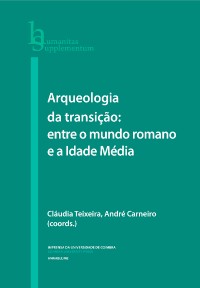Please use this identifier to cite or link to this item:
https://hdl.handle.net/10316.2/42121| Title: | L’image dans l’édifice cultuel Chrétien au IVe siècle: légitimité et fonctions | Other Titles: | Imagery in the Christian cult buildings in the IVth century: legitimacy and functions | Authors: | Caillet, Jean‑Pierre | Keywords: | Early Christian iconography;Rome;Fourth century A.D.;Imagery in the cultual building;Iconografia cristã antiga;Roma;Século IV d. C;Imagens nos edifícios de culto | Issue Date: | 2017 | Publisher: | Imprensa da Universidade de Coimbra | Journal: | http://hdl.handle.net/10316.2/41859 | Abstract: | Decisive moment for the establishment of Christianity in general, the fourth century is equally crucial for the affirmation of Christian iconography. However, the bishops assembled in council at Elvira in 306 expressed their opposition to the display of images in cultual buildings; and, toward 400, bishop Epiphanius of Salamis still held this position. But it is easy to realize that these commands were not always respected. Here is taken in account what might have been achieved under Emperor Constantine himself (or some decades later) in the Roman foundations of the Lateran and St. Peter; then, what is still to be seen in the “Theodorian” cathedral complex of Aquileia, and what it is possible to imagine according to the descriptions of bishop Paulinus in his foundations in Nola/Cimitile and Fundi; and finally what is also mentioned by Gregory of Nyssa for a martyrial church in Orient. It results that, apart from the true didactical utility now recognized by some churchmen, the functions of images are clearly perceived for structuring the place of worship according to the respective characters or the different areas within it. So, the essential aspects of what was going to be developed during the Middle Ages – and later – are already installed. Momento decisivo no estabelecimento da Cristandade em geral, o século quarto é igualmente crucial na afirmação da iconografia cristã. Todavia, os bispos reunidos no concílio de Elvira em 306 expressaram a sua oposição à utilização de imagens nos edifícios cultuais: e, em torno a 400, o bispo Epifânio de Salamis ainda mantinha esta posição. Mas facilmente se percebe que estas ordens não foram respeitadas. Aqui se debate o que poderia ter sido edificado sob as ordens do Imperador Constantino (ou algumas décadas depois) nas fundações romanas de São Pedro e de Latrão ; ou o que pode ser visto no complexo «teodosiano» da catedral de Aquileia, ou o que é possível imaginar de acordo com as descrições do bispo Paulino nas construções de Nola/Cimitile e Fundi ; e, finalmente, o que é mencionado por Gregório de Niceia a propósito de uma igreja martirial no Oriente. Assim, e aparte a utilidade didáctica reconhecida por alguns membros da Igreja, é claramente perceptível a função das imagens como elementos estruturantes do local de culto e oração nas suas diversas componentes específicas, mostrando nesta fase inicial a dinâmica que terá pleno desenvolvimento durante a Idade Média. |
URI: | https://hdl.handle.net/10316.2/42121 | ISBN: | 978-989-26-1352-9 978-989-26-1353-6 (PDF) |
ISSN: | 2182‑8814 | DOI: | 10.14195/978-989-26-1353-6_10 | Rights: | open access |
| Appears in Collections: | Arqueologia da transição: entre o mundo romano e a Idade Média |
Files in This Item:
| File | Description | Size | Format | |
|---|---|---|---|---|
| l_image_dans_l_edifice_cultuel_chretien_au_ives..pdf | 2.84 MB | Adobe PDF |  |
Items in DSpace are protected by copyright, with all rights reserved, unless otherwise indicated.
